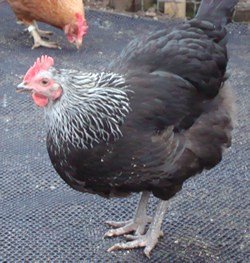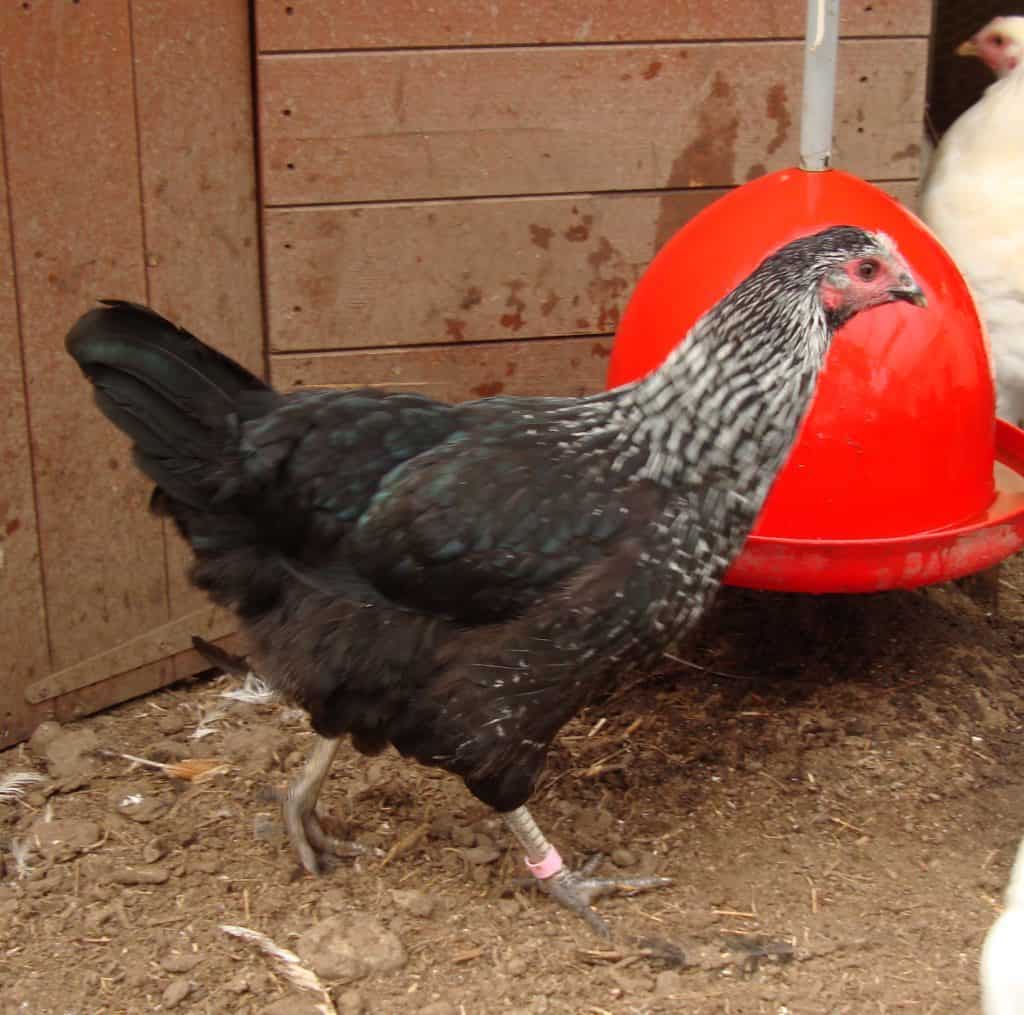Norfolk Grey Description
The following describes the history of the Norfolk Grey and was lifted straight from the Rare Breed Survival Trust website. The breed was developed by Fred Myhill of Norwich between 1910 and 1912 under the name Black Marias. He went off to fight in the First World War but came back to find all his work undone. He started again and then took them to the 1920 Dairy Show. In about 1925 he changed the name to the more appealing Norfolk Grey. They were mainly the result of a cross breed between Silver Birchen Game and Duckwing Leghorns.
Unfortunately this bird, which was developed as a hardy utility breed, never really caught on. In the 1970s stocks therefore reportedly dwindled to just 4 birds which were then acquired by Andrew and Sue Bowden. This quiet hen is a black bird but with a beautiful beetle green sheen to its feathers. It has silver neck hackles and small but refined head with a single comb and small wattles. They are a fairly upright breed with dark grey or black coloured legs. The males are black in the body and have abundant white/silver neck feathers. As a breed they are not particularly broody however which could be why it is so rare.
Breed Temperament
The Norfolk Grey has a quiet and fairly timid nature so they are unlikely to cause a problem with their coop mates in a mixed flock.
Breed Size
A Norfolk Grey is classified as a large fowl – light
Eggs of Norfolk Grey
This chicken should lay between 200 and 220 medium brown or tinted eggs in their first laying year. The eggs are a good size too.



